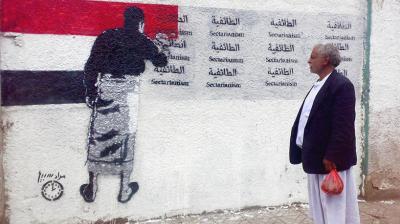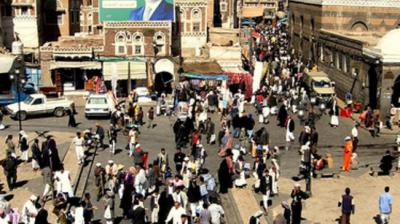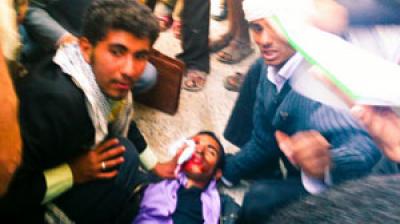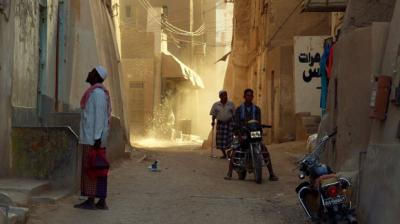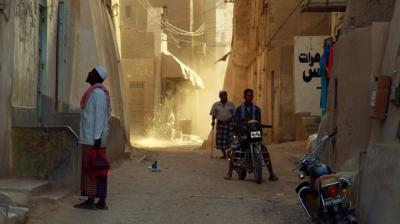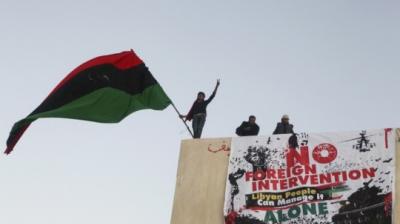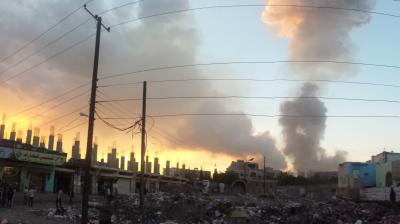The recent conclusion of the National Dialogue Conference in Yemen might seem to point to progress in that fractured state. But the absence of the rule of law and impartial authority is allowing violence to fester and the international community needs to act decisively.
Violence, including assassinations, is rumbling once more in Yemen. On January 23, following previously largely peaceful civil protests, clashes in the southern city of Al-Dhale, between the military and militants said to belong to Al-Hirak (the “southern movement”), resulted in several deaths. At about the same time, fighting restarted around Dammaj in north Yemen, widening from exchanges between the Al-Houthi movement and Salafist groups to take in gunmen associated with the Hashid tribal federation and spilling over into the Amran governorate.
Ahmed Sharaf el-Din, a key representative of the Al-Houthi movement, was murdered on January 21, reportedly on the way to the signing session of the National Dialogue Conference (NDC). Only weeks earlier, a drone strike on a wedding convoy had killed 12 men in what looked like a tragic mistake.
This messy panorama is characteristic of the kaleidoscope of violence in Yemen, with its multiple, overlapping issues and complex relations between power-brokers. It also typifies the associated impunity: with little to fear by way of legal repercussions, acts of violence are attractive instruments in pursuit of partisan agendas. As @BaFana3 tweeted, “Laws must be designed with the underlying assumption that they will be violated & have to be enforced. That concept is missing in #Yemen.”
Groups with the capability hedge their bets by simultaneously engaging in peaceful conversation on Yemen’s governance, civil protest and acts of violence. This creates further grievances and will make implementation of the results of the recently concluded NDC so much more difficult.
Yet beneath the growing violence something even more dangerous is occurring—conscious activation of new social boundaries, growing sectarian profiling and radicalisation by politicians and religious leaders. In Al-Hirak calls for renewed separation of the south are becoming more immediate and shrill. The Al-Houthi movement, which originally sought peacefully to restore Zaydi community life and self-rule in north Yemen, has entered into open violent conflict with Yemen’s government, Salafists and Hashid-affiliated tribes. And the ruling Yemen's General People’s Congress has remained unbending throughout the NDC process.
Reservoir of grievance
The ability to mobilise support on the part of those who would benefit from the power generated by such polarisation is greatly facilitated by the deep sense of social injustice that permeates the country—a reservoir of accumulated grievances about land, water, property and civil rights. This has followed at least two decades of political marginalisation of large groups and regions, elite self-enrichment and the gradual sidelining or weakening of peaceful possibilities for legal redress.
Yemen’s justice system has gradually become an extension of the elites. Politicisation of the Supreme Judicial Council, patronage-driven staffing and a deliberate squeeze on funds have made the system largely irrelevant and non-accessible to most Yemenis. At the same time, tribal customary law, on which most rely for the peaceful resolution of their differences, has weakened. The co-optation of many sheikhs and their growing business practices—it was considered shameful for tribesmen to engage in business only decades ago—have created significant conflicts of interests in the adjudication of disputes, around land and water in particular, casting doubt on the impartiality of sheikhs as arbiters.
About half of all Yemenis are thus left without access to formal legal remedies. The other half can still look to customary law but this faces its own challenges, in dealing effectively with collective-action problems and in respect of human rights in general and the position of women in particular. Social status increasingly matters in securing justice—in many places defined at gunpoint.
Desperation and drones
Compounding this bleak state of justice is the desperate economic situation of many. The unemployment rate is estimated to range between 40 and 60 per cent, while over half of all Yemenis live below the poverty line.
The government’s strategy of accommodating recurrent US drone strikes, in exchange for political support and finance, strengthens the sense of injustice, exacerbated by the frequent killing of innocent people. While such strikes reflect an overblown depiction of the threat from Al-Qaeda (examples here and here), the festering of the grievances they generate only fosters recruitment for violence and stimulates its use as an alternative way to settle disputes.
Despite the upbeat conclusions of the NDC process, the record of Yemen’s elites suggests they will struggle to improve this situation. The country has come to be perceived as a backwater of the Arab Spring and if the international community is genuinely concerned about the fate of its people it will have to invest more political capital to press for change. The hard work of implementing the NDC’s results is only about to start and there will be stiff political resistance. By presenting a more robust and united front in the UN Security Council, as in 2011, and by continuing adequately to resource and support the UN special envoy, the international community can weigh in more strongly.
Although Syria, South Sudan and the Central African Republic consume all attention at the moment, they also show how much more difficult conflict-resolution becomes once the dogs of war have been unleashed. Does this need to happen again?




